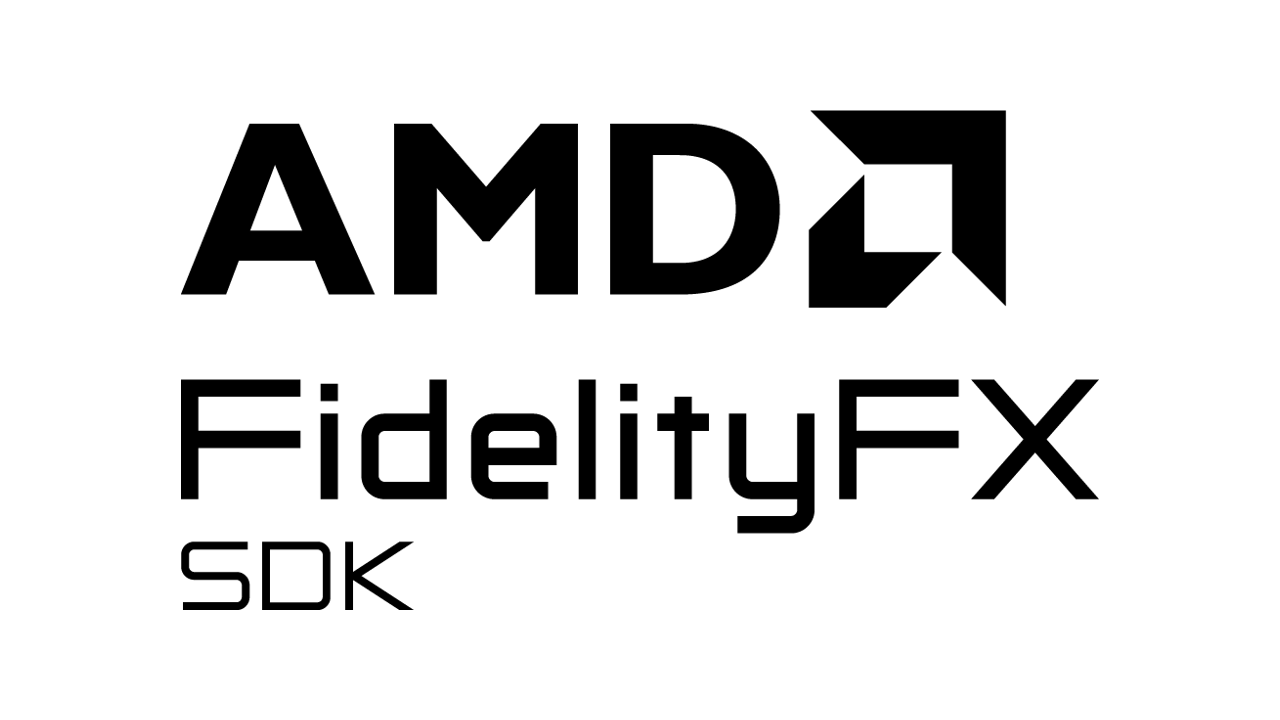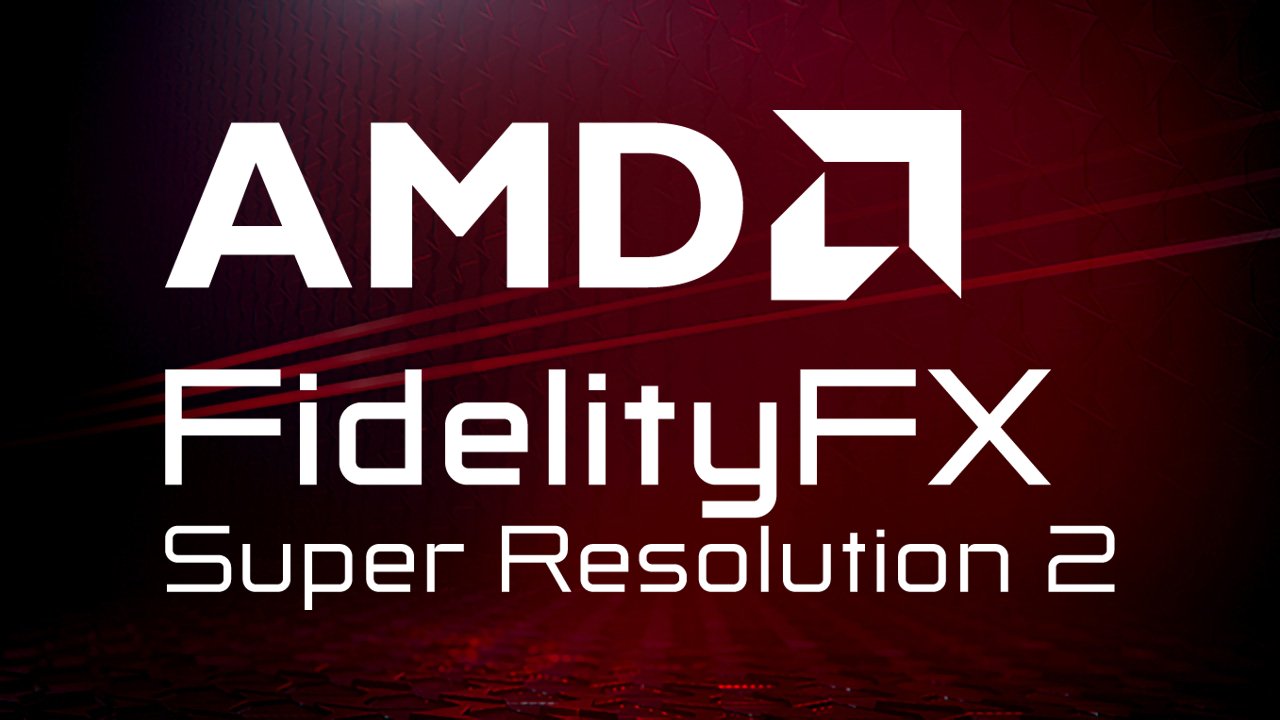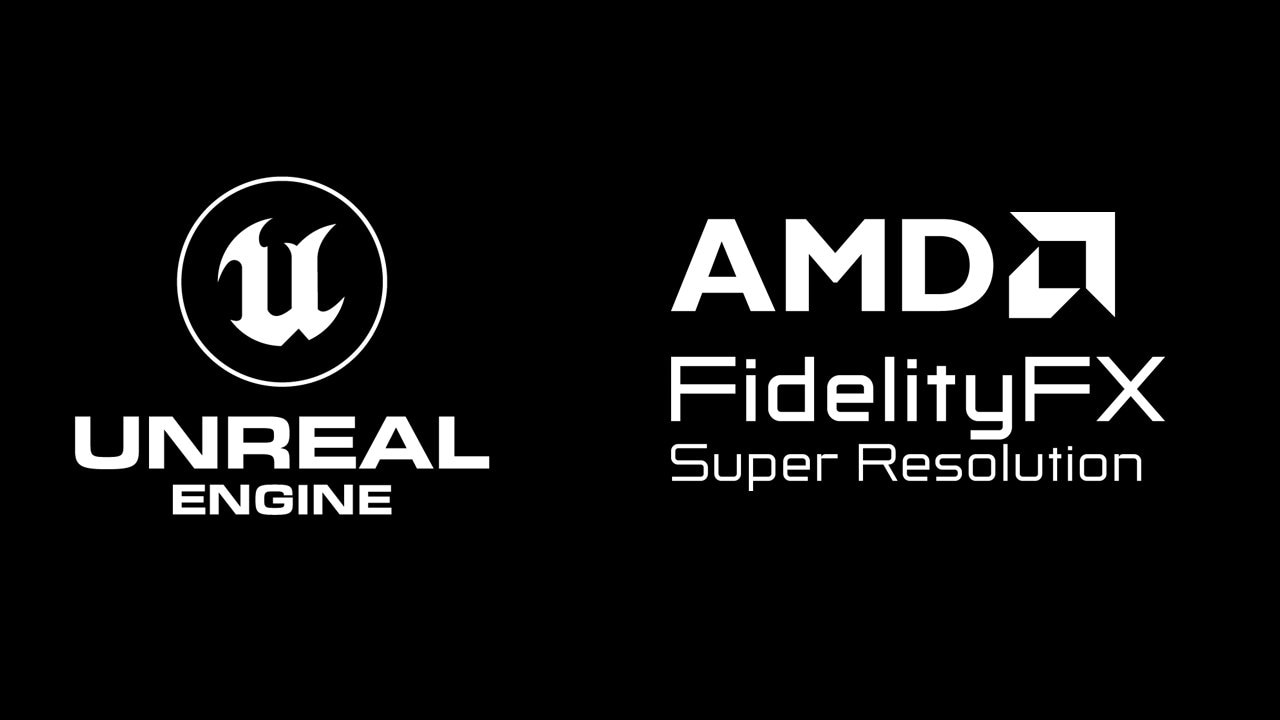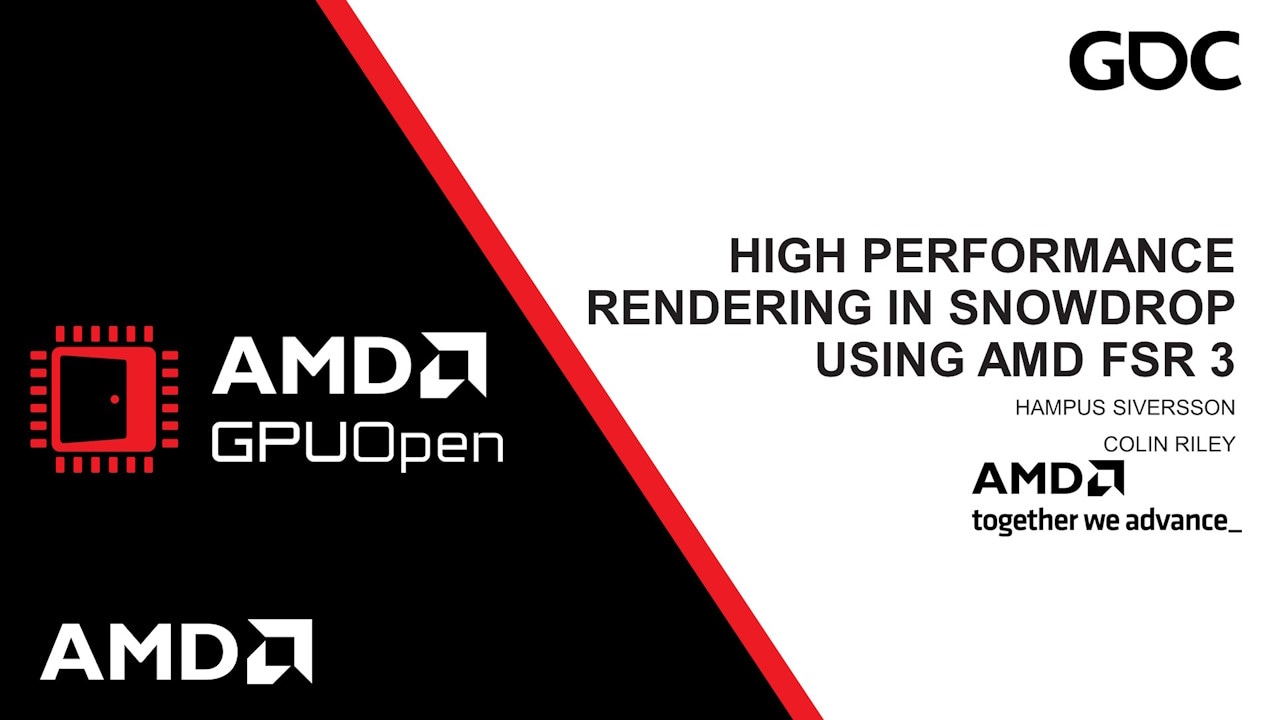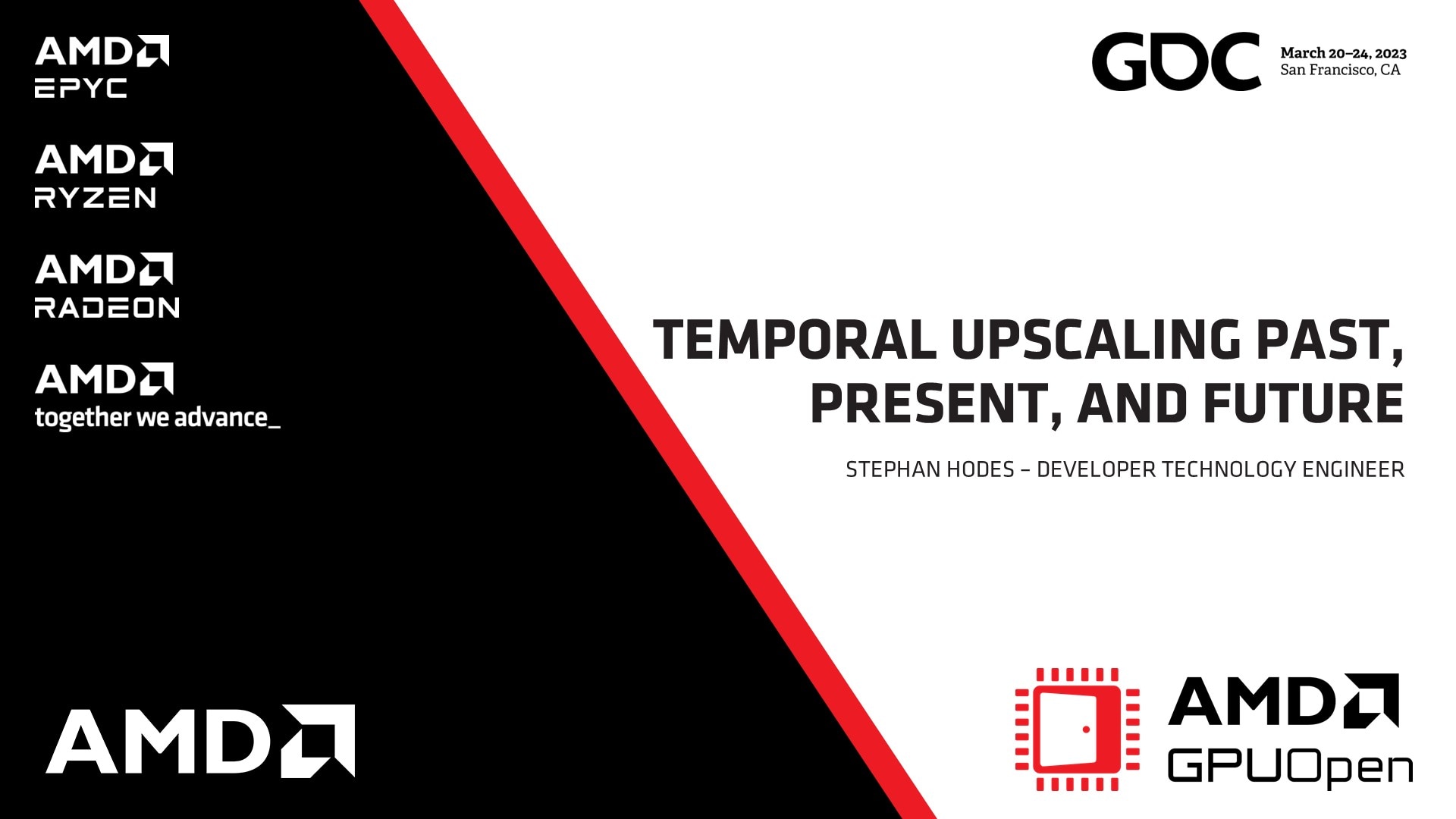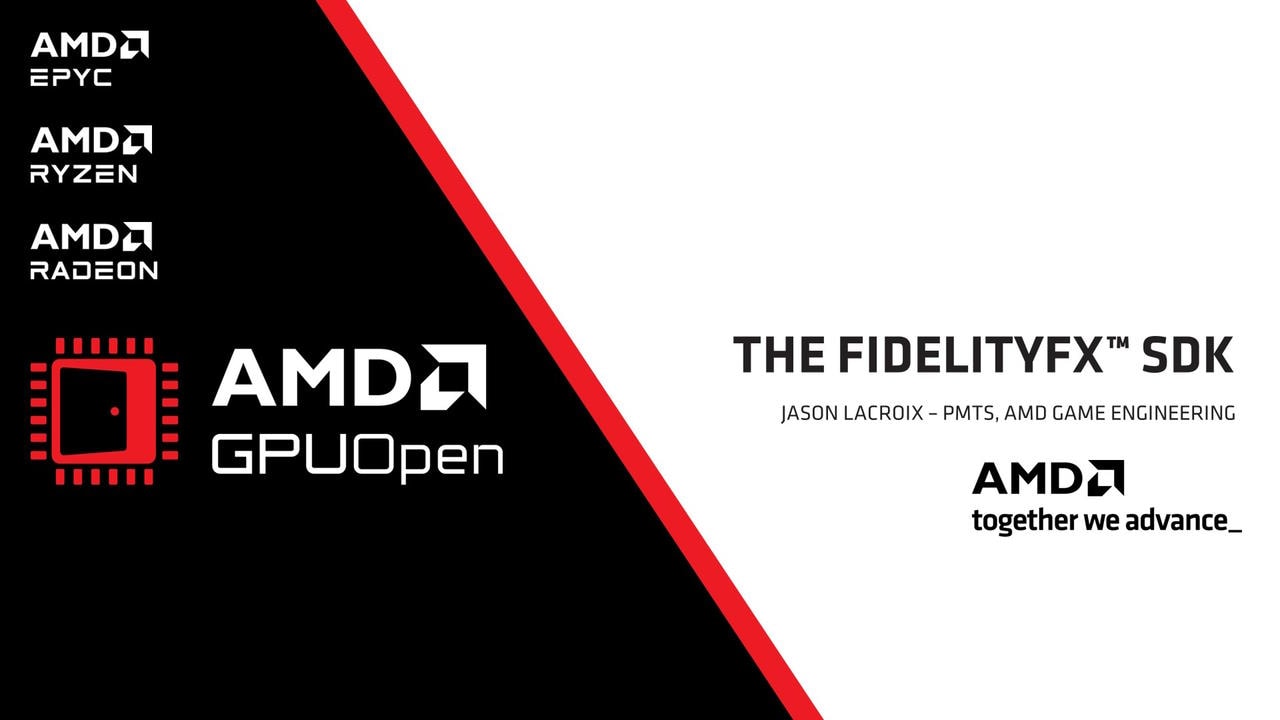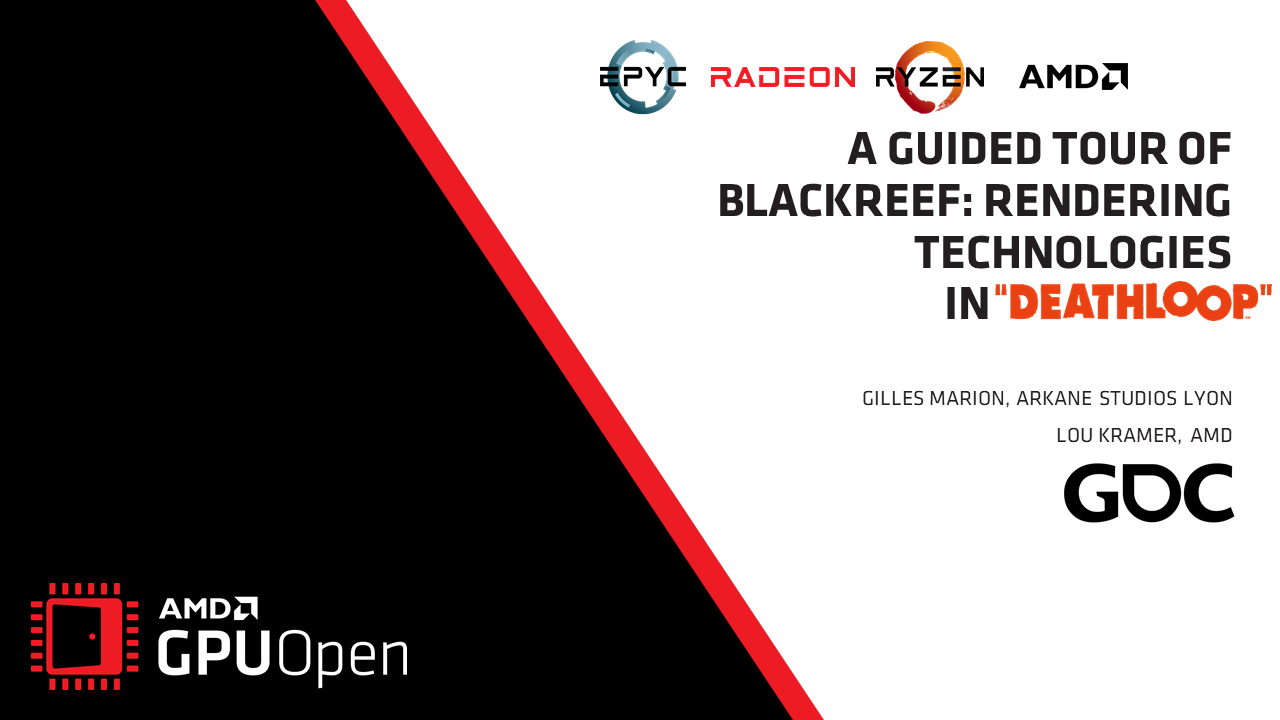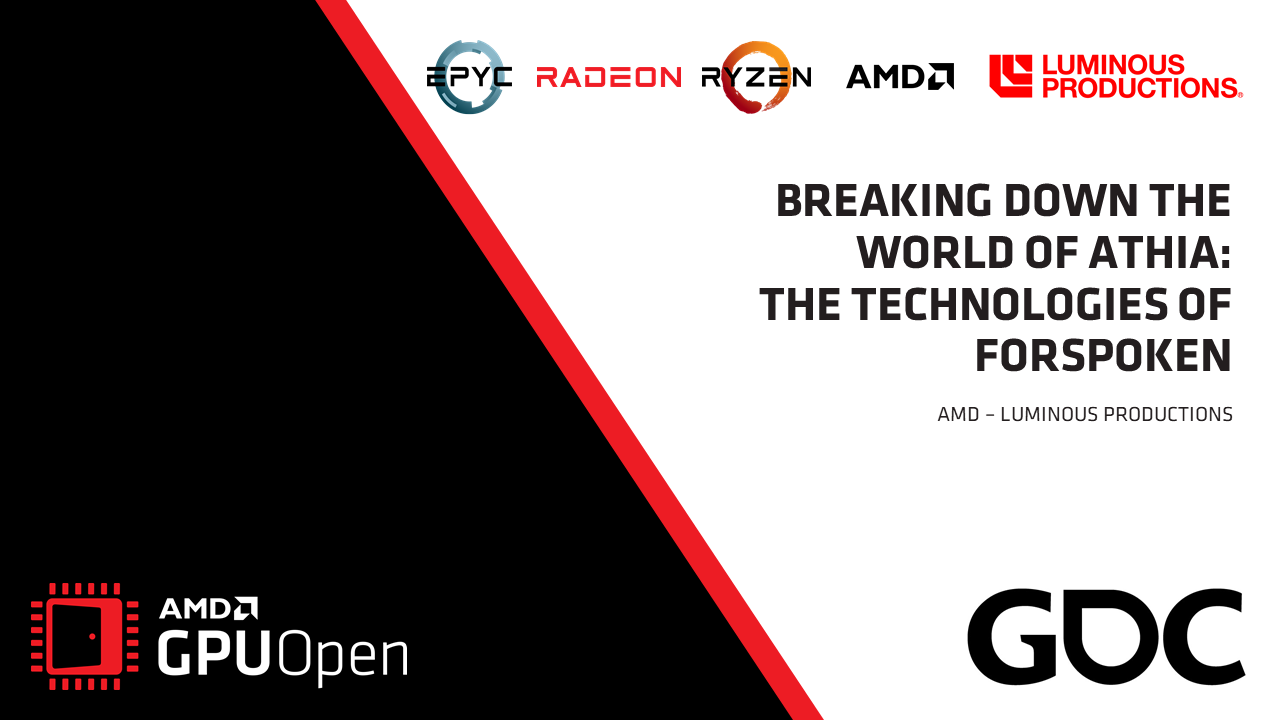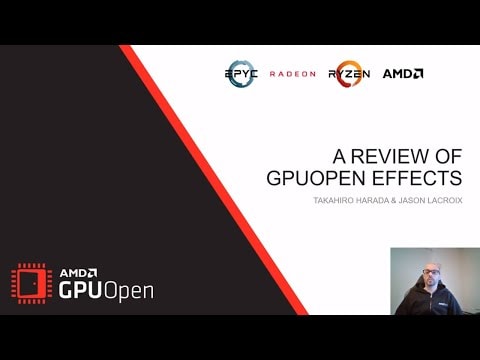
Other AMD FidelityFX effects

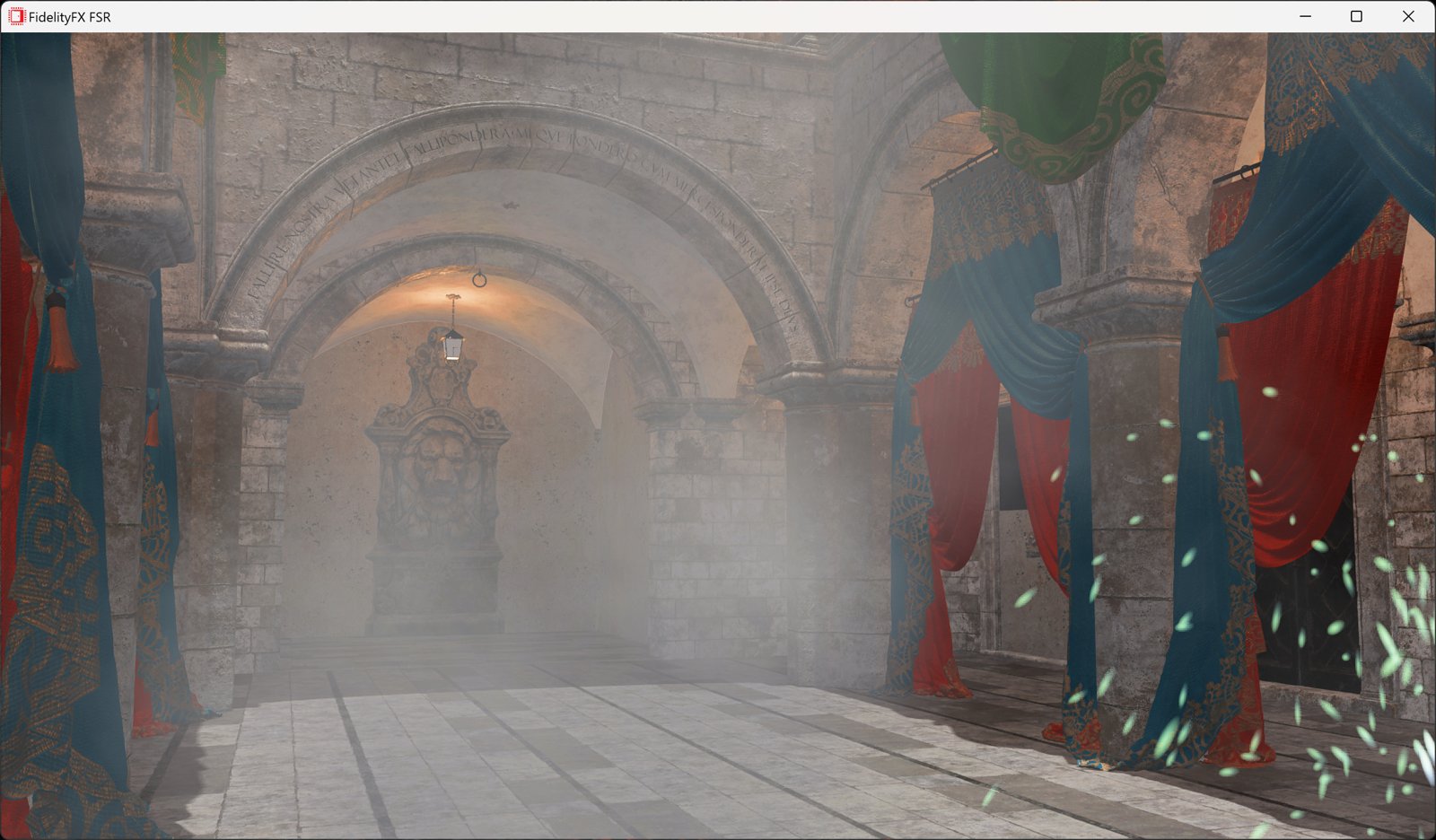
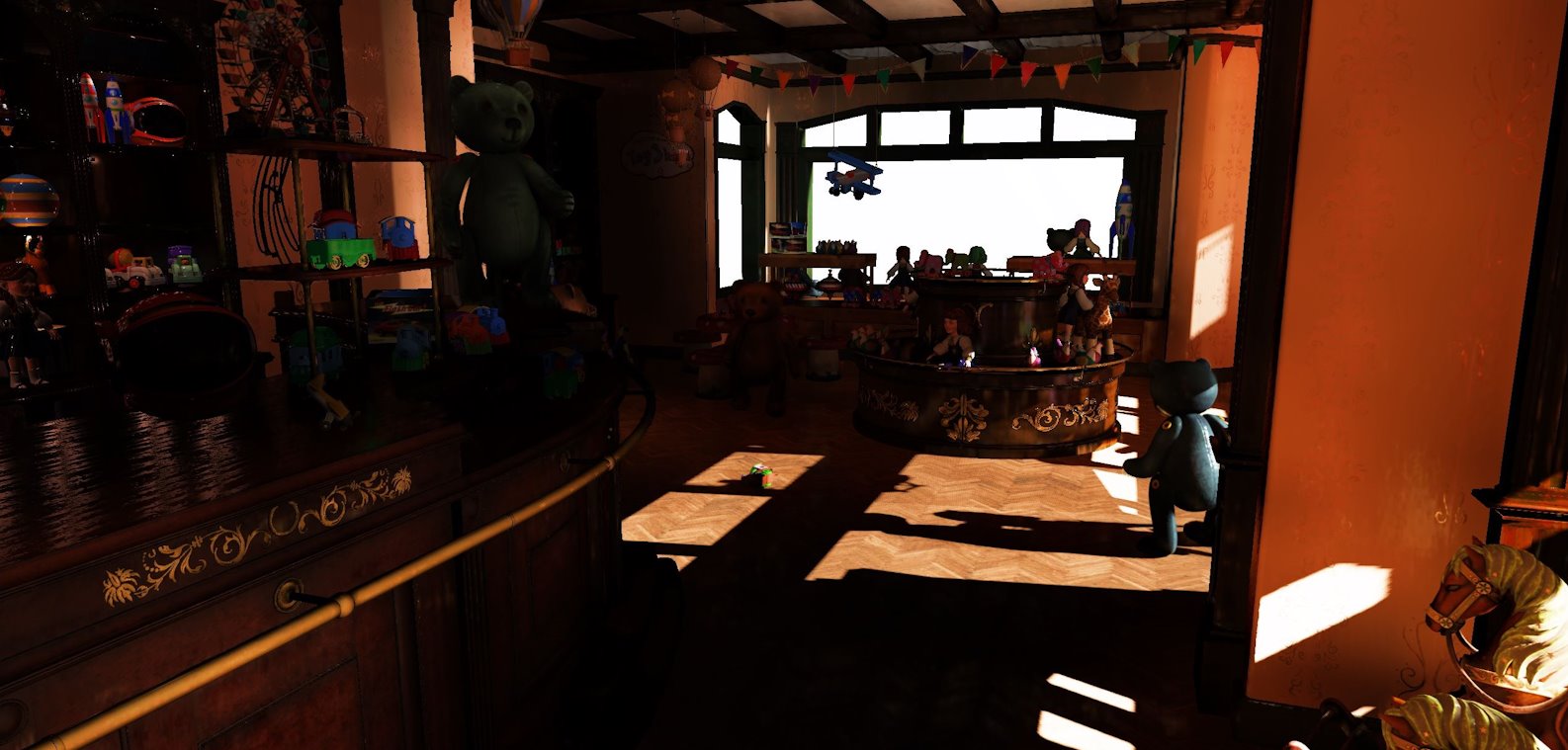



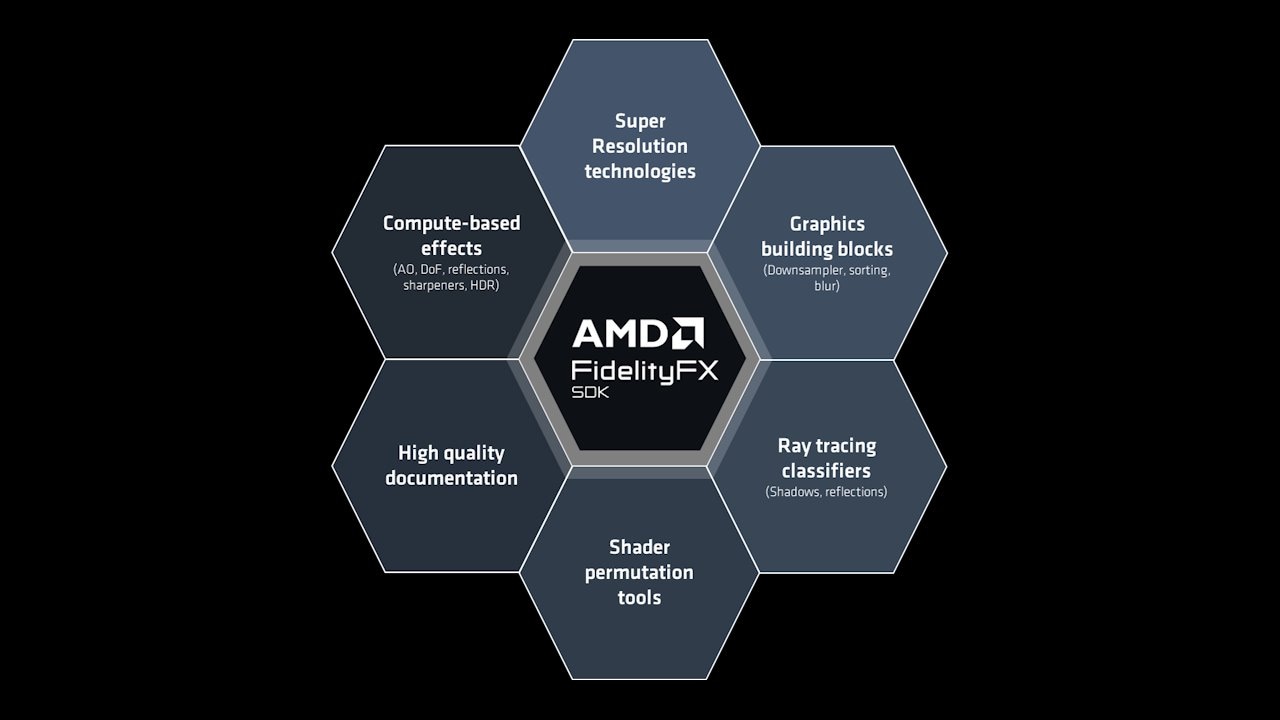


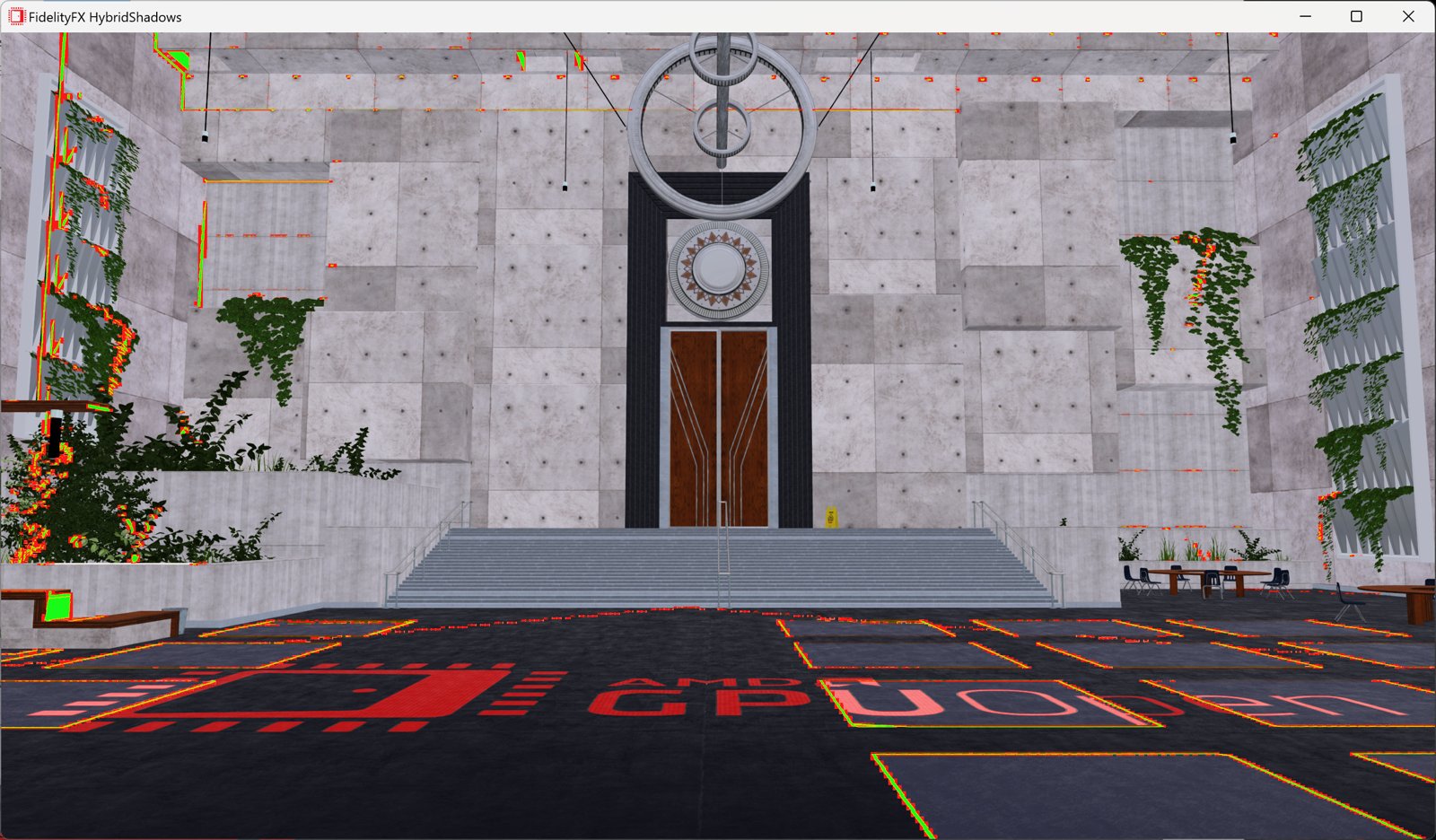
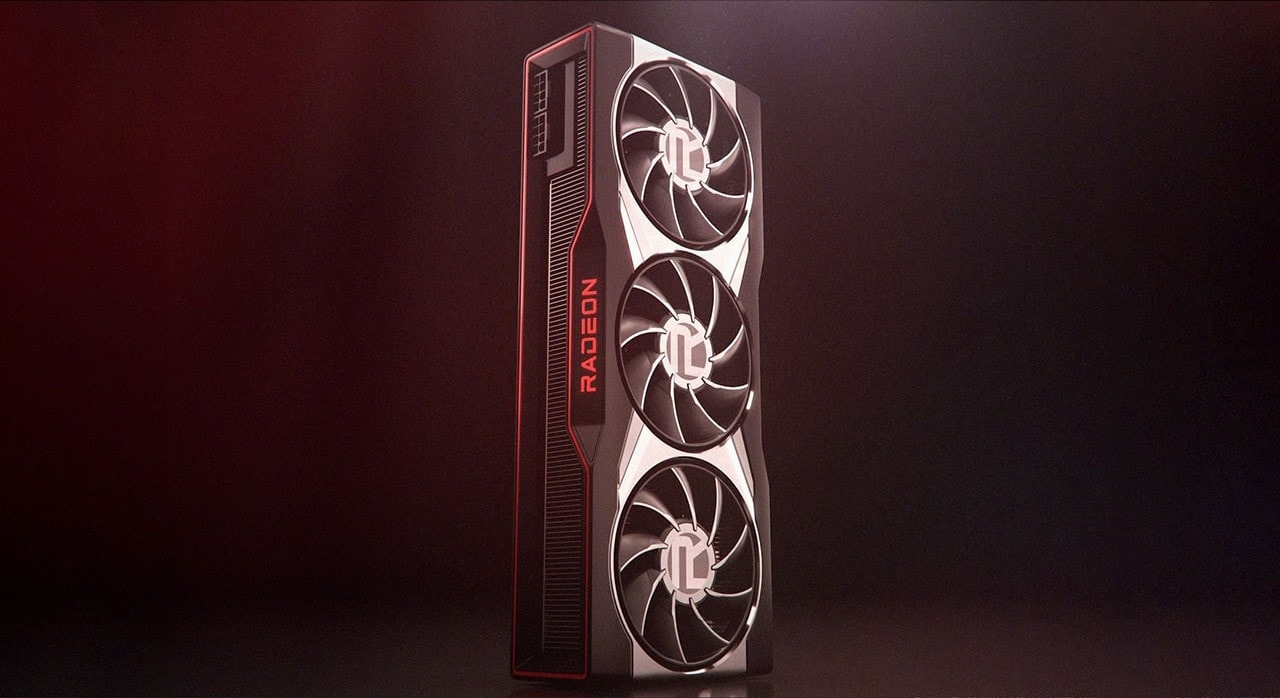
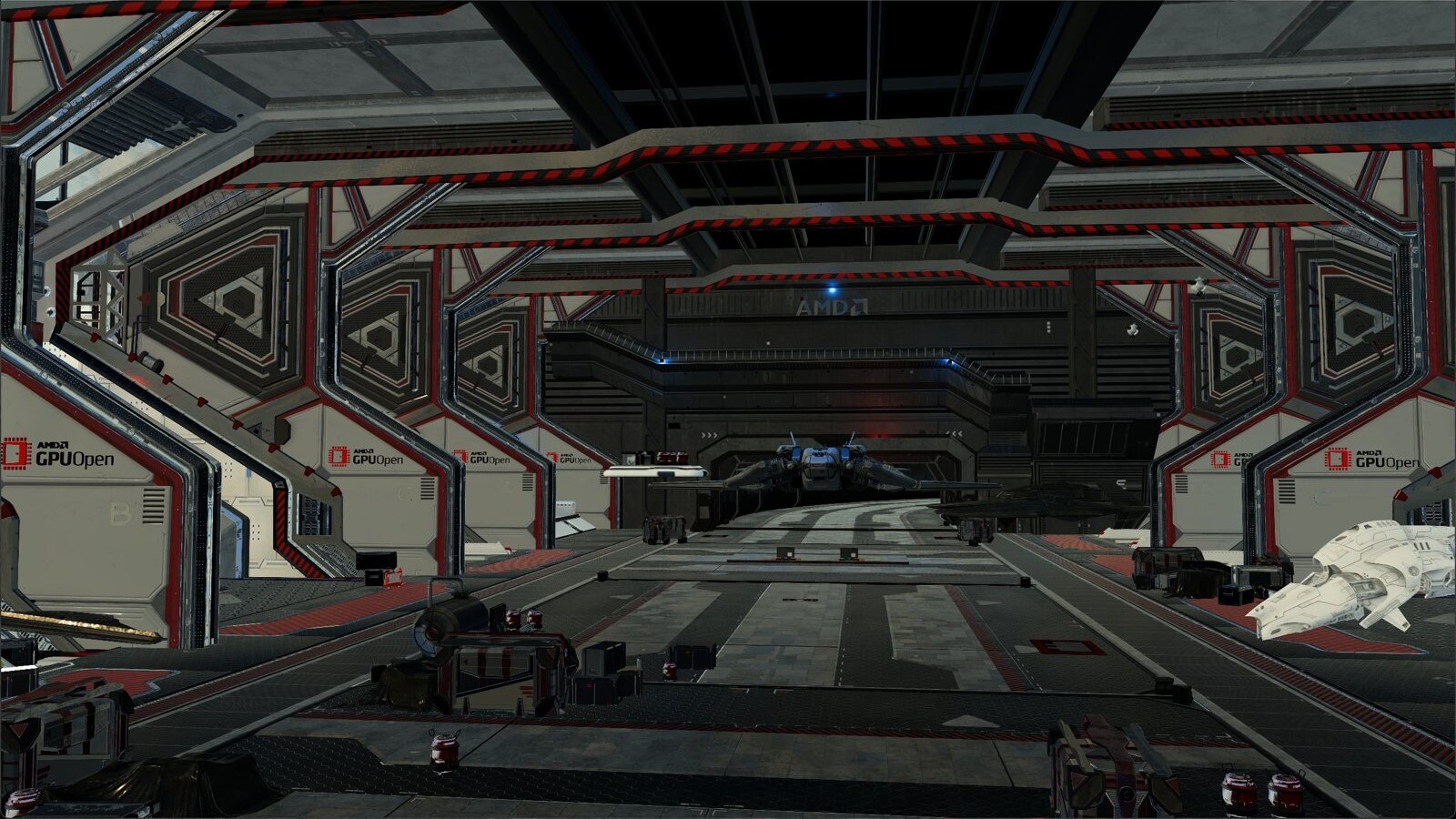
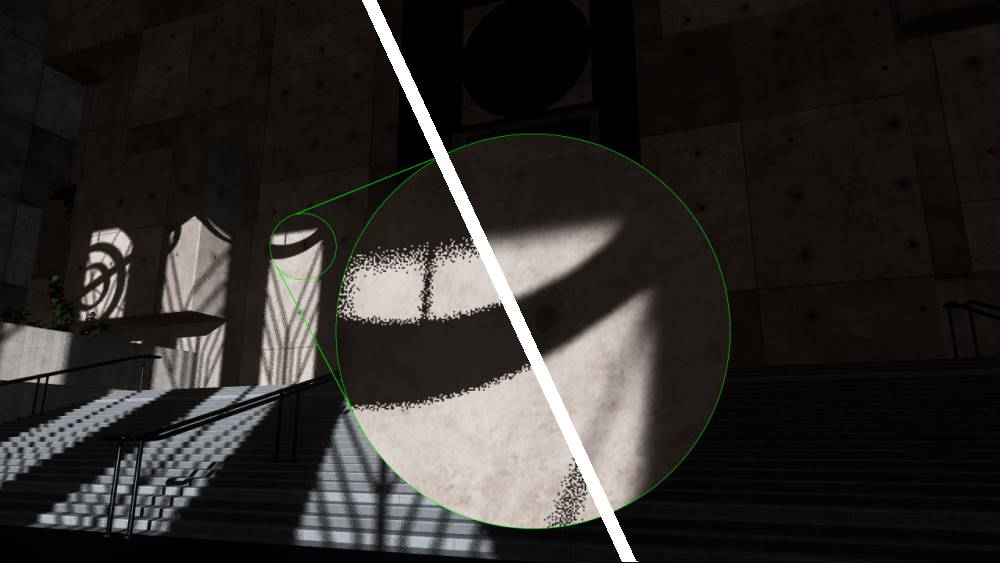
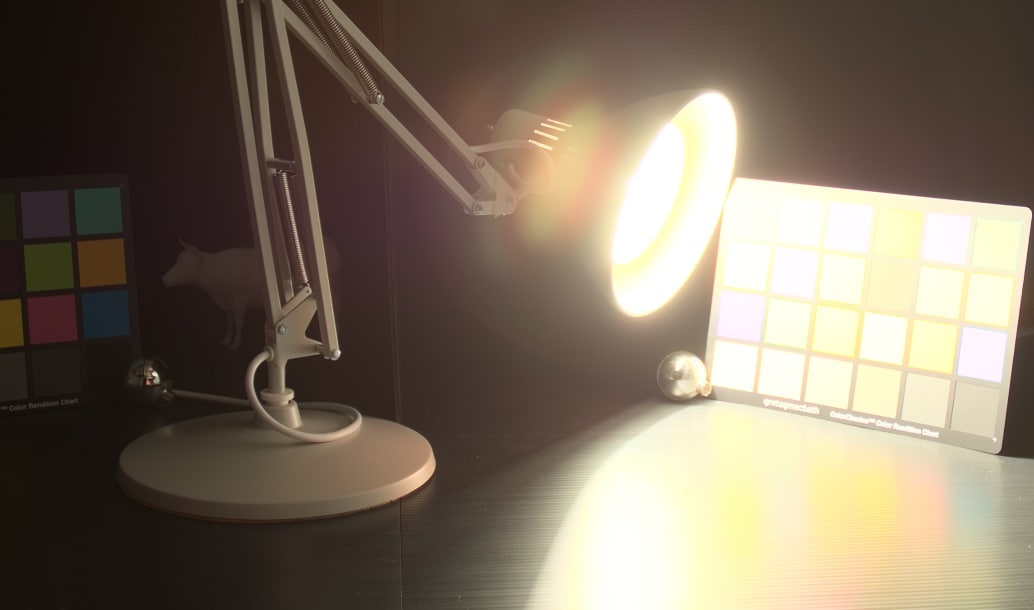
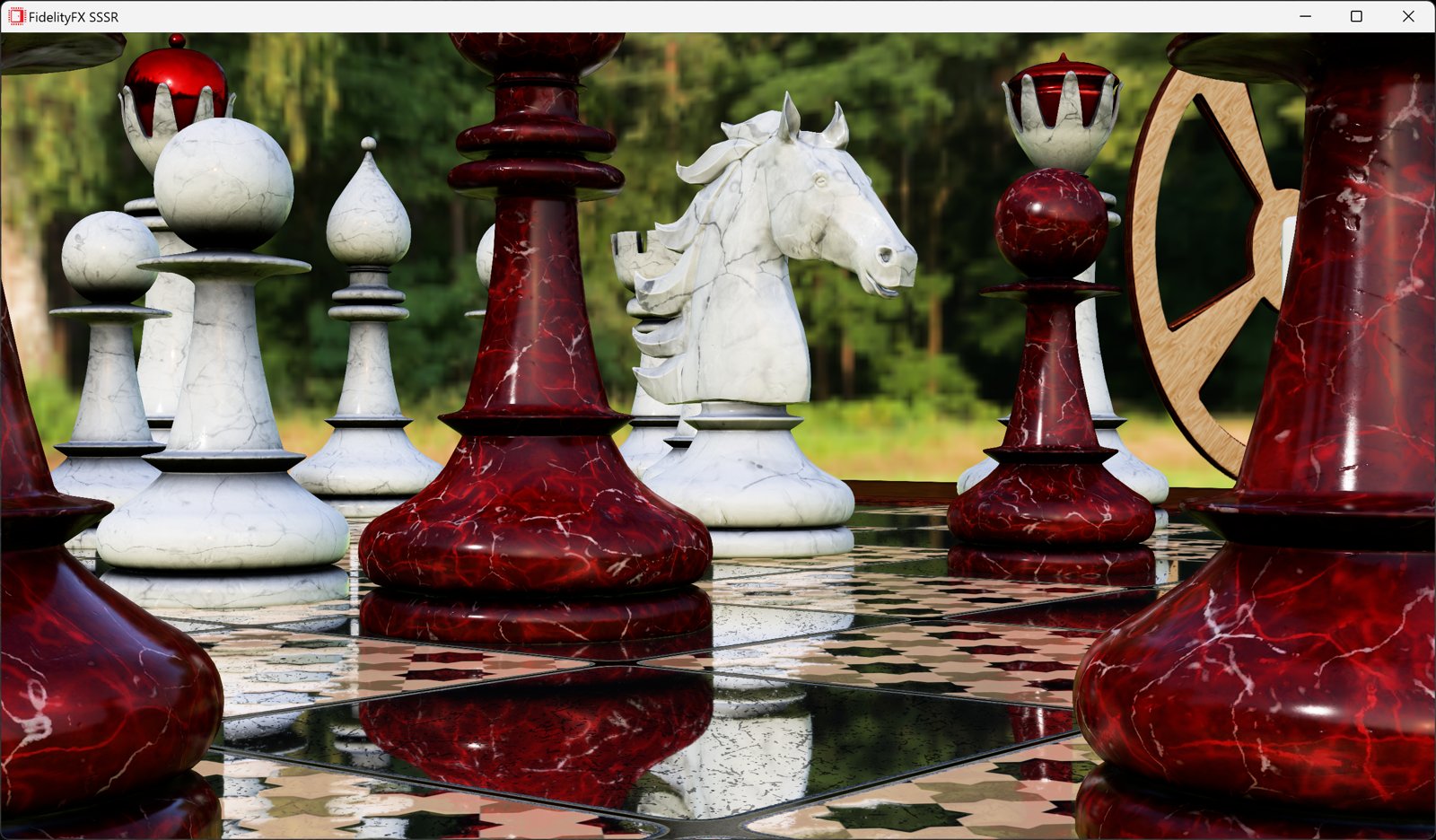
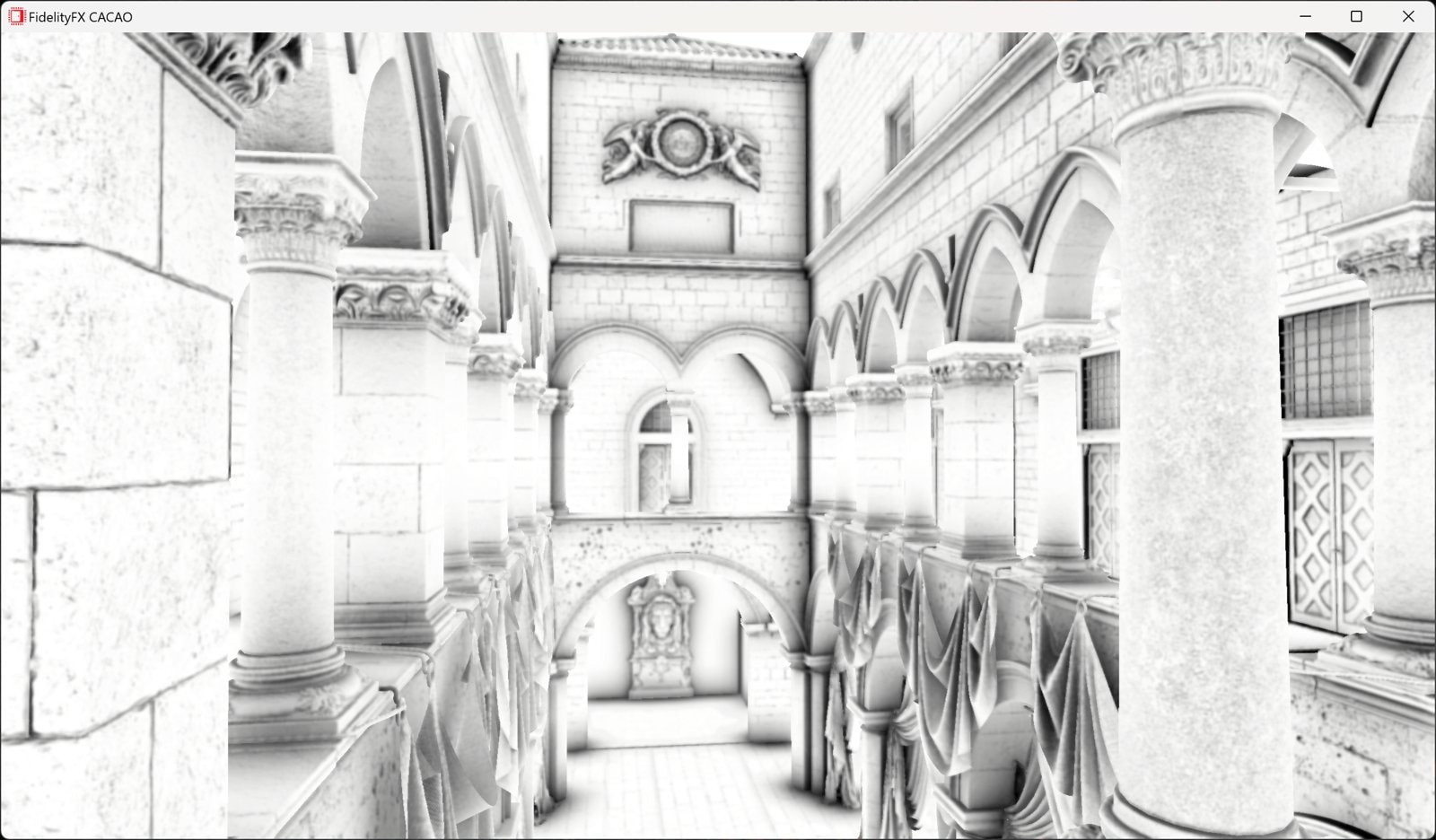
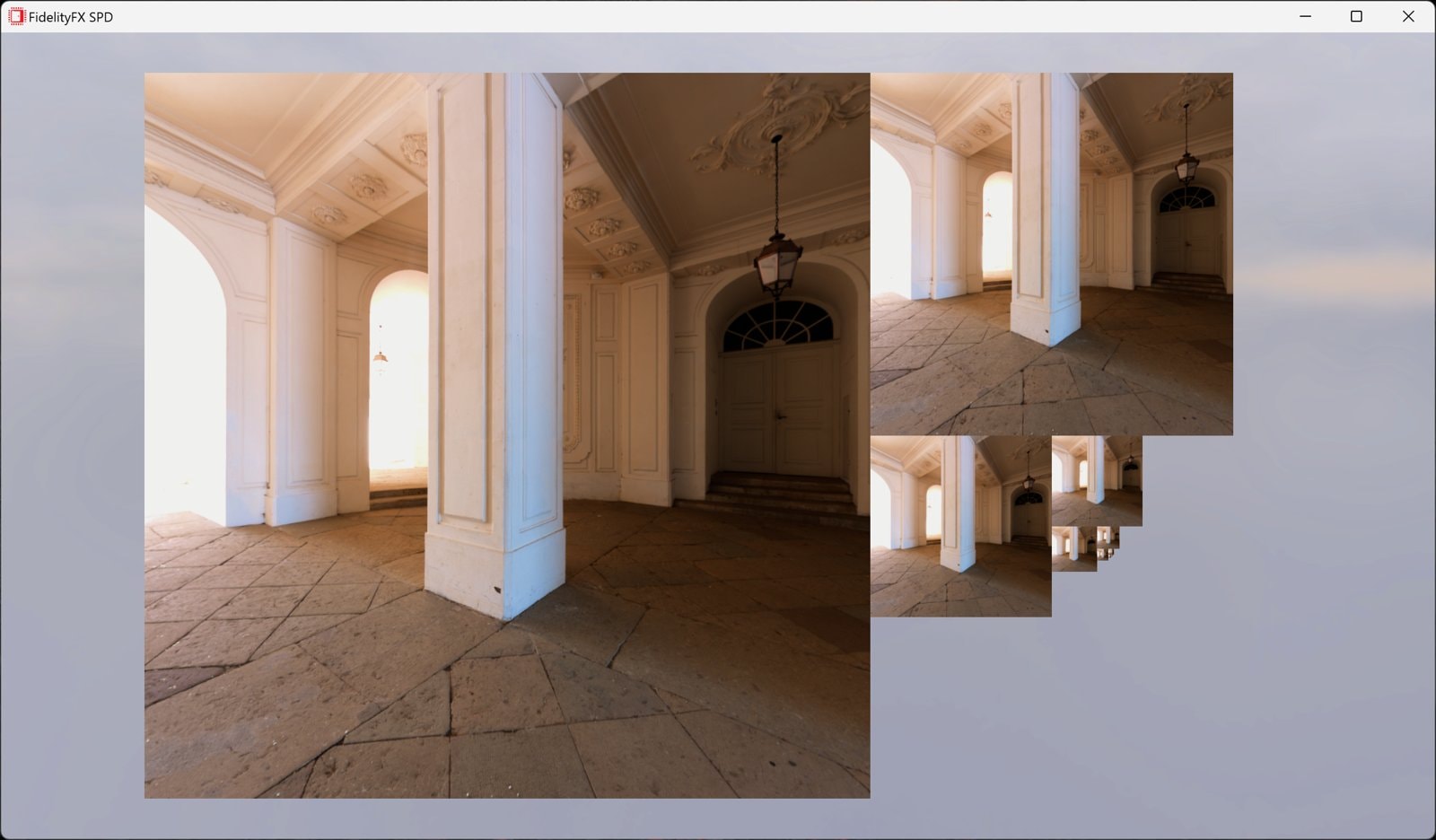
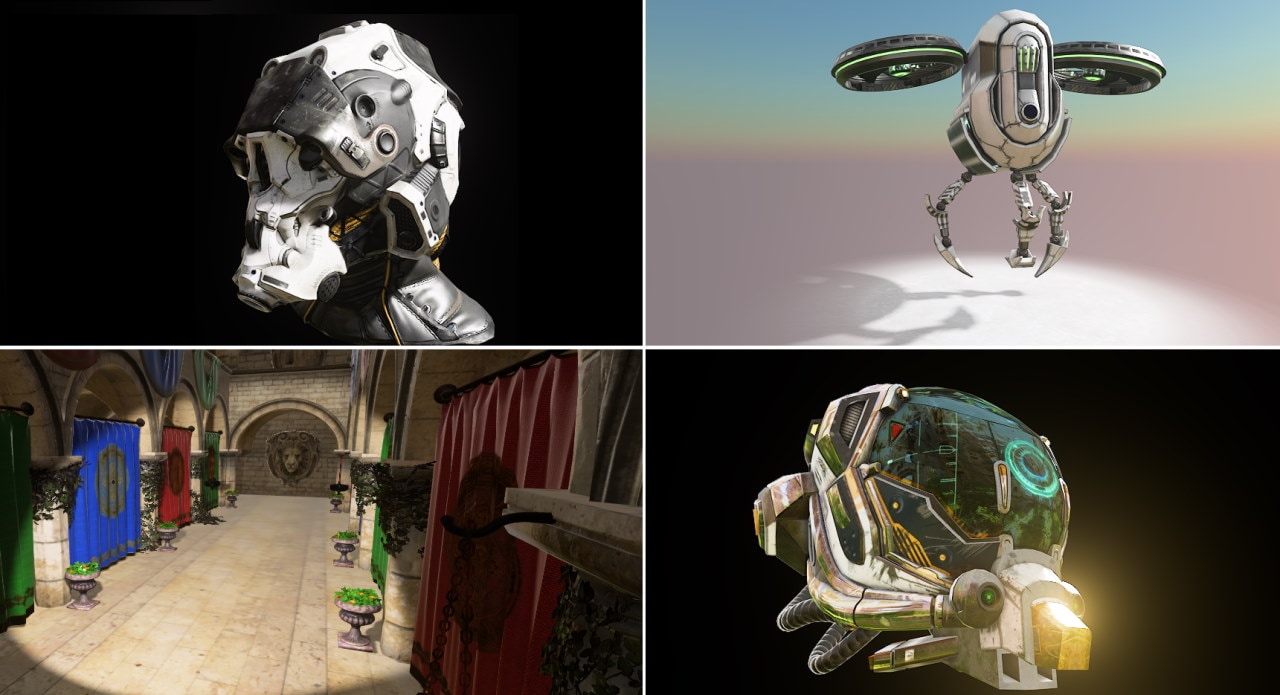
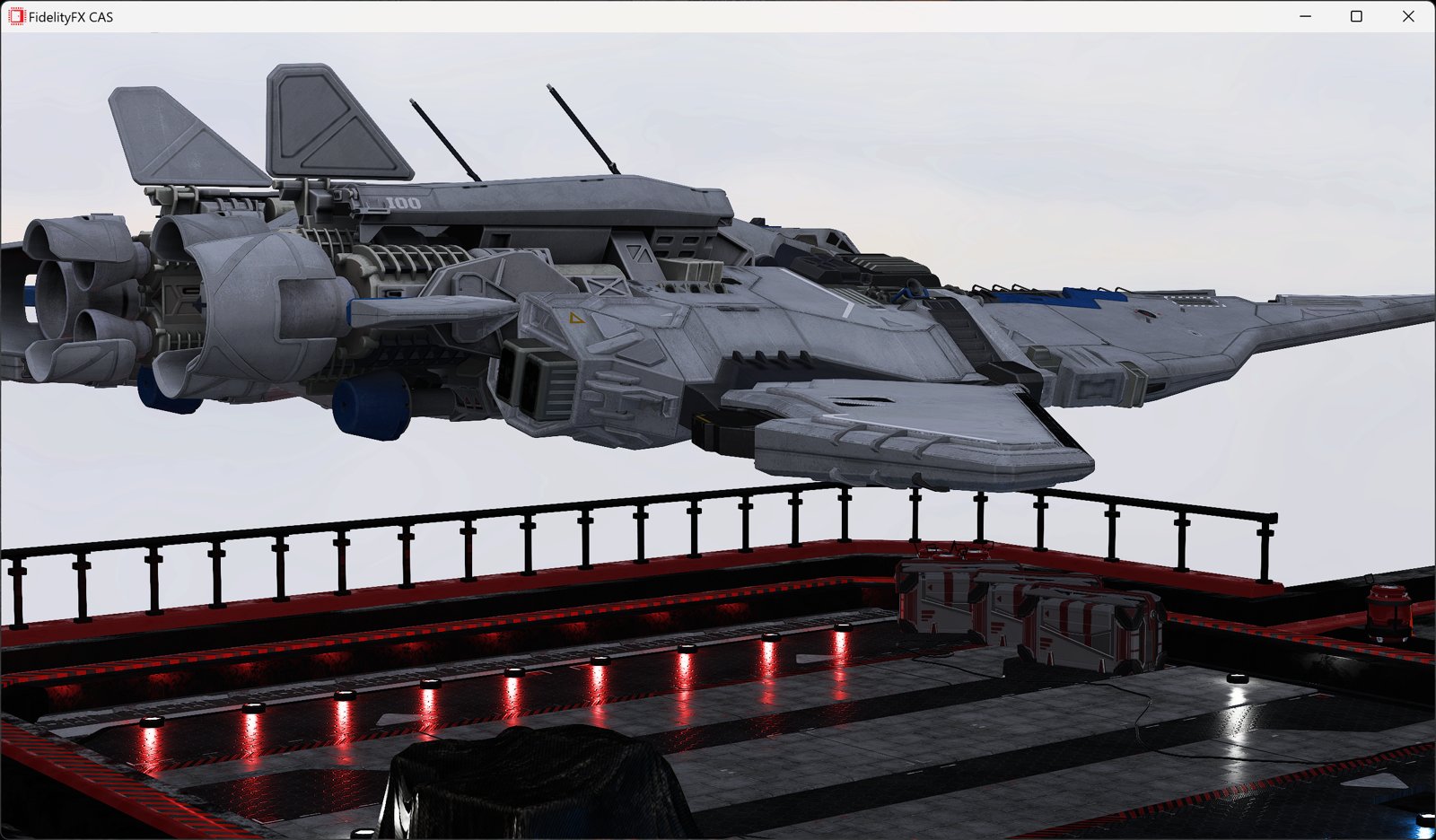


AMD FidelityFX™ Super Resolution (FSR) is our open source, high-quality solution for producing high resolution frames from lower resolution inputs.
It uses a collection of cutting-edge algorithms with a particular emphasis on creating high-quality edges, giving large performance improvements compared to rendering at native resolution directly. FSR enables “practical performance” for costly render operations, such as hardware ray tracing.
Supports:
Looking for AMD FidelityFX Super Resolution 3? This page is for our spatial upscaler, FSR 1. If you’re looking for our latest super resolution temporal upscaling and frame generation technology you’ll need to head over to our dedicated FSR 3 page instead!
Updated as part of AMD FidelityFX SDK v1.1:





Super Resolution
Cross-platform
Open Source
Easy to integrate
Highly optimized
AMD FidelityFX Super Resolution is a spatial upscaler: it works by taking the current anti-aliased frame and upscaling it to display resolution without relying on other data such as frame history or motion vectors.
At the heart of FSR is a cutting-edge algorithm that detects and recreates high-resolution edges from the source image. Those high-resolution edges are a critical element required for turning the current frame into a “super resolution” image.
FSR provides consistent upscaling quality regardless of whether the frame is in movement, which can provide quality advantages compared to other types of upscalers.
FSR is composed of two main passes:
FSR also comes with helper functions for color space conversions, dithering, and tone mapping to assist with integrating it into common rendering pipelines used with today’s games.

AMD FidelityFX Super Resolution passes work best in perceptual color space, and should therefore be integrated after tone mapping. Passes that introduce noise or other high-frequency visual components to the scene should be rendered after upscaling to avoid those noisy components being amplified.
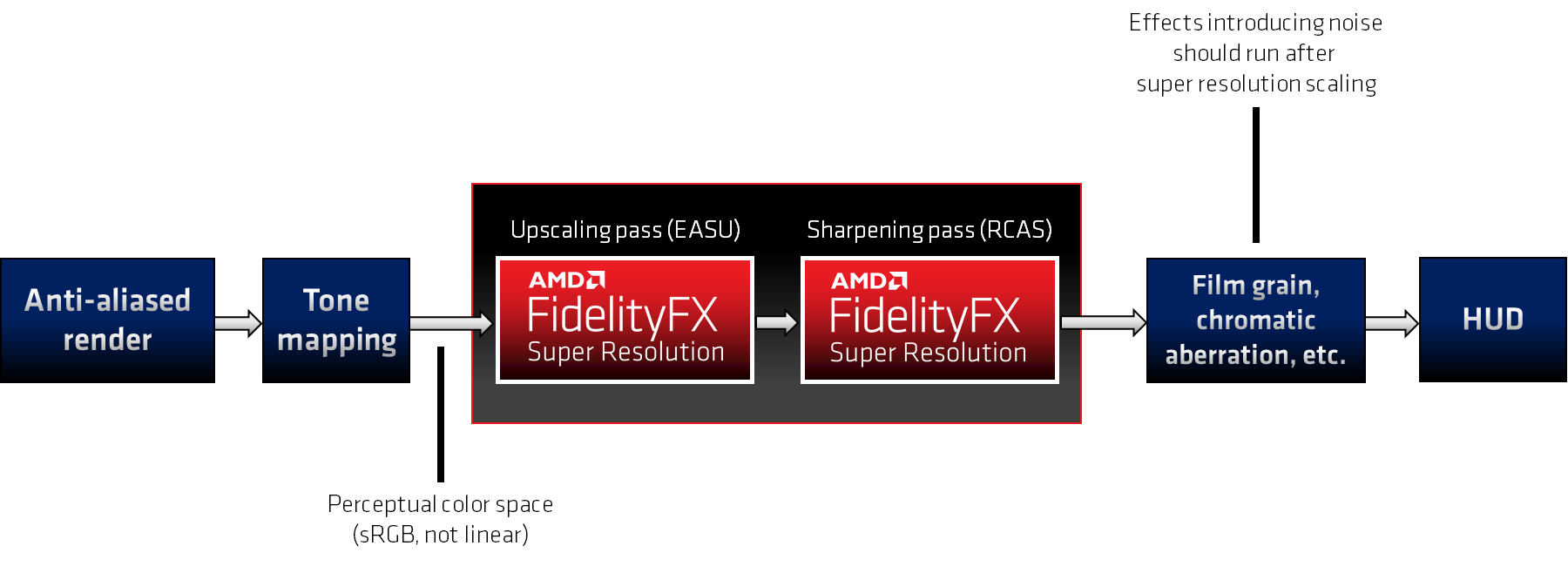
Looking to integrate AMD FidelityFX Super Resolution into your game? For more information on how to integrate FSR and how to expose it in your game’s user interface please consult our FSR presentation.
Please also take a look at our naming guidelines for advice on presenting FSR in your game UI, and to obtain AMD FidelityFX logo assets.
Want to quickly try out AMD FidelityFX Super Resolution (FSR) or AMD FidelityFX Contrast Adaptive Sharpening (CAS)?
You can use our new command-line tool AMD FidelityFX CLI, which lets you test FSR or CAS on a screenshot, or any other image.
The comparison images below are a 1200 x 700px crop taken from a 4K frame from our FSR sample provided via our Cauldron framework. The images are JPEGs saved with minimal compression to keep the file sizes lower to support faster load times.
Native resolution is on the left, and FSR Ultra Quality on the right.
This next set of images are the same crop as above, but this time comparing bilinear upscaling (left) with FSR Performance (right).
Here is a different crop, with native, and then all four FSR quality settings shown.
To make it easier to see the differences, we’ve applied the native resolution image over the top (left) so you can see how FSR quality modes (right) compare by moving the slider.
AMD FidelityFX Super Resolution exposes different quality modes that varies the amount of scaling to apply to the source image, depending on the quality/performance ratio desired.
In addition to fixed scaling, FSR may be used in “arbitrary scaling” mode, whereby any area scale factor between 1x and 4x is supported. This mode is typically used for Dynamic Resolution Scaling, whereby source resolution is determined by a fixed performance budget to achieve a minimum frame rate.
| FSR quality mode | Description | Scale factor | Input resolution | Output resolution |
|---|---|---|---|---|
| Ultra Quality | Ultra Quality mode produces an image with quality virtually indistinguishable from native rendering. It should be selected when the highest quality is desired. | 1.3x per dimension | 1477 x 831 | 1920 x 1080 |
| Quality | Quality mode produces a super resolution image with quality representative of native rendering, with a sizeable performance gain. | 1.5x per dimension | 1280 x 720 | 1920 x 1080 |
| Balanced | Balanced mode produces a super resolution image approximating native rendering quality, with a major performance gain compared to native. | 1.7x per dimension | 1129 x 635 | 1920 x 1080 |
| Performance | Performance mode visibly impacts image quality and should only be selected in situations where needing additional performance is critical. | 2.0x per dimension | 960 x 540 | 1920 x 1080 |
AMD FidelityFX Super Resolution is hand-optimized for best performance and runs well on a large variety of GPUs. The following table provides some indication of upper performance threshold numbers for the cost of running FSR, measured on different classes of GPUs.
FSR target resolution | Enthusiast GPUs RADEON™ RX 6800XT, NVIDIA RTX 3080 | Performance GPUs RADEON™ RX 6700XT, NVIDIA RTX 3060 Ti | Mainstream GPUs RADEON™ RX 5700XT, NVIDIA RTX 2060 SUPER |
|---|---|---|---|
4K | 0.40 ms or less | 0.60 ms or less | 1.0 ms or less |
1440p | 0.20 ms or less | 0.30 ms or less | 0.50 ms or less |
System Specifications

AMD FidelityFX Super Resolution is now available as a plugin for Unreal Engine 4 at 4.27.1 or higher, or as a feature patch you can apply for Unreal Engine 4.26.
Discover our Unreal Engine FSR plugimSee our Unreal Engine feature patchesOur Unreal Engine Performance Guide is a must-read for all Unreal Engine 4 developers.
We’ve recently updated it to include a comprehensive section dedicated to upscaling in Unreal Engine, including FSR.
Find out about Unreal Engine upscaling
AMD FidelityFX Super Resolution is now available in both the Unity HDRP and URP.
Unity 2021.2 includes built-in FSR support. Unity developers can use FSR by enabling dynamic resolution in HDRP assets and Cameras, and then selecting “FidelityFX Super Resolution 1.0” under the “Upscale filter” option.
FSR can also now be integrated into Unity URP projects with our new patch, which you can download below.
Check out the features of Unity 2021.2Download our new patch for Unity URPFor more information on AMD FidelityFX Super Resolution in Unity check out our dedicated Unity page.
This page includes tips on installing our URP patch and examples of FSR in Unity.
An example use of AMD FidelityFX Super Resolution exists within the Xbox Game Development Kit samples.


Updated as part of AMD FidelityFX SDK v1.1:
AMD FidelityFX backend updates, including buffer allocator overrides
Updated documentation and release of reference documentation for SDK + Framework
Native Microsoft® GDK® backend implementation library (requires developer access to GDK® program)




















